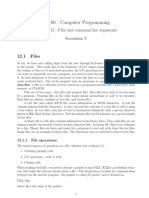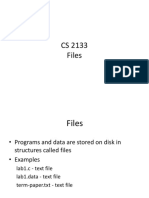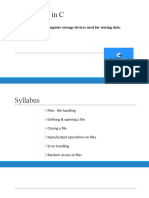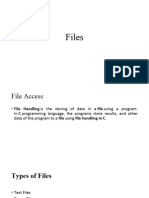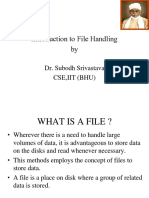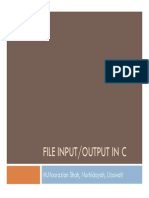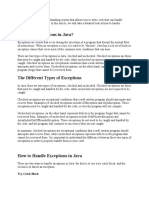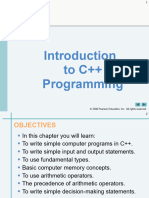0% found this document useful (0 votes)
37 views20 pagesCLang Lect14 en v2
The document provides an overview of file input/output in C programming, detailing standard input/output streams, file handling functions, and modes for opening files. It includes examples of using functions like scanf(), printf(), fscanf(), and fprintf() for reading and writing data, as well as handling errors. Additionally, it discusses binary vs. text files and presents exercises for practical application of the concepts covered.
Uploaded by
Le Duc AnhCopyright
© © All Rights Reserved
We take content rights seriously. If you suspect this is your content, claim it here.
Available Formats
Download as PDF, TXT or read online on Scribd
0% found this document useful (0 votes)
37 views20 pagesCLang Lect14 en v2
The document provides an overview of file input/output in C programming, detailing standard input/output streams, file handling functions, and modes for opening files. It includes examples of using functions like scanf(), printf(), fscanf(), and fprintf() for reading and writing data, as well as handling errors. Additionally, it discusses binary vs. text files and presents exercises for practical application of the concepts covered.
Uploaded by
Le Duc AnhCopyright
© © All Rights Reserved
We take content rights seriously. If you suspect this is your content, claim it here.
Available Formats
Download as PDF, TXT or read online on Scribd
/ 20










